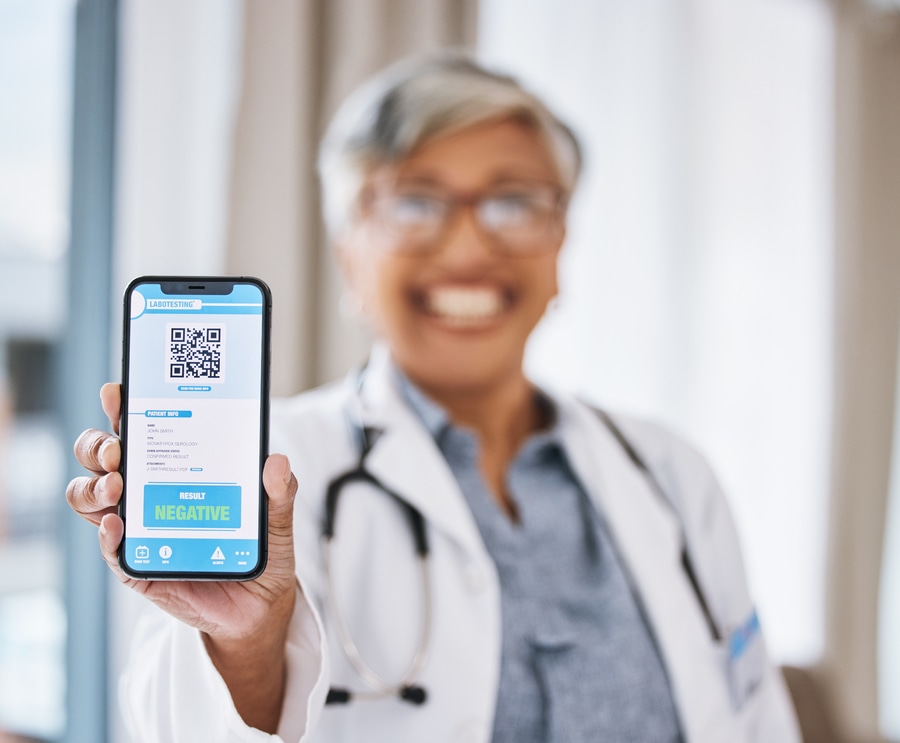
#Industry News
Fast and Easy: How QR Codes Improve the Healthcare Experience
QR codes are a simple but flexible way to improve your healthcare facility's operations and connect with patients.
For over 20 years, QR codes have become an increasingly common sight across multiple industries. From shipping to restaurants, these small black and white squares have earned their popularity thanks to their ease of creation and use.
Healthcare is another one of those industries. Patients and healthcare providers have benefitted from QR codes’ ability to quickly and easily transmit information. Medical groups also like how painless it is to integrate them into pre-existing workflows.
In today’s article, we cover more about QR codes and how they’re used throughout the medical sector.
What is a QR code?
Quick Response (or QR) codes are 2D barcodes that encode information as a series of black and white pixels within a square shape. When a digital device scans the code, it accesses that information.
QR codes were initially developed by the Japanese company Denso Wave, a subsidiary of Toyota, in 1994. They were created to track vehicles and parts more accurately than conventional barcodes.
A standard barcode can only be read in one direction, from top to bottom, and can only store a limited amount of information. QR codes are read in two directions, from top to bottom and left to right. This allows them to store far more data. In fact, a QR code can store website URLs, phone numbers, or up to 4,000 characters of text.
This depth of information has made QR codes wildly popular in multiple industries. While still widely used in logistics and shipping as initially intended, QR codes are also commonly seen in consumer-facing businesses. This is because modern smartphones come with built-in QR scanners, making them an easy way to deliver information to customers.
One example you may have encountered is at restaurants. Rather than printing and laminating their menus, a restaurant can simply print a QR code and place it on the table, letting customers scan the code with their phone and access the menu that way.
How can QR codes be used in healthcare?
QR codes are used in both patient-facing roles and internal management by the healthcare sector.
QR Codes for Healthcare Providers
Barcodes are already widely used to track medication, supplies, and patient activity. QR codes are simply an evolution of this practice.
Because QR codes can contain more information than simple barcodes, they can also be more precise about the exact chemical composition of a patient’s medicine, for example. QR code generators are easily accessible from any medical-grade tablet or computer, letting providers create and print codes on the go.
QR Codes for Patients
Given that 85% of Americans already own a smartphone, the possibilities for patient engagement are already there. By issuing patients ID cards with QR codes, patients can access digital resources related to their conditions or treatment, expedite the sign-in process at their provider, and more.
Providers can also prepare QR codes that link to educational materials related to a patient’s condition or reason for visiting. This can help make them more engaged with their own treatment.
Lastly, because QR codes can be generated easily, they require minimal time to create and can be included in pre-existing procedures. Given how much people already use their smartphones, there’s little reason not to reach them in a format they are already comfortable with.
Closing Thoughts
The beauty of implementing QR codes for healthcare is that much of the technology needed to implement them already exists. Medical-grade computers with scanners are already available, and almost every patient already has a phone capable of reading codes. This means using QR codes requires virtually no investment or changes in procedure.
If you’d like to explore medical-grade computers with integrated scanners, contact the team at Cybernet Manufacturing. We’d happily explain how our computers can coordinate with QR code scanners, printers, and more.
Join the conversation and connect with us on this and other relevant topics – Follow us on Facebook, Twitter, and LinkedIn.





